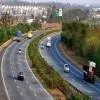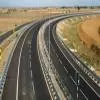- Home
- Infrastructure Transport
- ROADS & HIGHWAYS
- Heading towards the Roads to Recovery
Heading towards the Roads to Recovery
Apart from providing employment to millions this infrastructure activity connects and accelerates economic momentum between large hubs of economic activity and the centres that lie in between. However, the pace of road construction and awards has fallen drastically during 2019-20. Construction of highways slowed to 27 km a day during April-January in the current fiscal, from 29.7 km a day achieved in all of 2018-19.
Construction World conducted another successful webinar on ‘Roads to Recovery’, powered by SANY , which witnessed great success with over 800 attendees tuning in to hear what our esteemed panellists have to say on India’s way forward in the roads sector.
The webinar began with presenter Pratap Padode, Editor-in-Chief, Construction World and President, FIRST Construction Council, welcoming the guest panellists to the session. The panellists included industry stalwarts – Deepak Garg, Managing Director Sany South Asia & India, and Vice President, Sany Group; Devendra Jain, Executive Director & CEO, Dilip Buildcon; Hardik Agarwal, Executive Director, Dineshchandra R Agrawal Infracon; RK Pandey, Member (Projects), National Highways Authority of India (NHAI); Sandeep Garg, Managing Director & CEO, Welspun Enterprises; and Sandeep Upadhyay, Managing Director-Infrastructure Advisory, Centrum Capital.
Road construction over the years
Pratap Padode, Editor-in-Chief, Construction World and President, FIRST Construction Council, began by highlighting the road construction scenario in the country over the past 10 years.
“2019-20 has not been able to hold up to 2018-19,” observed Padode. Having said that, he went on to add that the Bharatmala Pariyojana is among the most promising infrastructure projects that can help drive India’s GDP growth.” The project area covers 53,000 km with a fund provision of Rs 5.35 trillion for Phase-1. “A total of 255 road projects with an aggregate length of about 10,699 km have been approved till October 2019 under the Bharatmala Pariyojana with a total cost of Rs 2.65 trillion approximately,” he added. The target for completion is 2021-22. “But we are constantly having delays in projects ,” said Padode. Of 1,698 central-sector infrastructure projects worth Rs 1.50 billion and above, with an anticipated completion cost is Rs 24.41 trillion, 578 projects have reported delays, 400 projects reported cost overruns, 202 projects reported both time and cost overruns, as on November 2019. Out of 578 delayed projects, 190 (32.87 per cent) projects have overall delay in the range of 1-12 months, 121 (20.93 per cent) projects have delay in the range of 13-24 months, 146 (25.26 per cent) projects have delay in the range of 25-60 months and 121 (20.93 per cent) projects have delay of 61 months and above. The average time overrun in these 578 delayed projects is 38.84 months. That said, “every year, we are losing at least Rs 1 trillion in projects due to delays,” highlighted Padode.
Challenges in restarting after COVID-19
Speaking about construction works commencing in the current scenario, said Devendra Jain, Executive Director & CEO, Dilip Buildcon, “In the last four to five 4-5 days, we have been connecting with the cement and steel industries, but their manufacturers do not have drivers and hence are unable to supply the materials.Transportation is a major factor; and the supply chain now is the biggest problem. For cement, we do not keep an inventory for more than 15 days and for steel of more than 20-25 days. So here, the supply chain remains the main challenge. Another challenge is the manpower and labour. The morale of the labourers is low and they would probably want to go to their villages once transportation picks up. After that we will be the monsoon season. So, we will have to see where the red zones are going to be.”
Adding to this, said Hardik Agrawal, Executive Director, Dineshchandra R Agrawal Infracon, “We want to ensure everyone’s health and safety on site. We want to request the government to ensure transportation of labourers after proper testing by the contractors of their workers. Allowing interstate moving of labourers will be beneficial for the highways sector as well as the market.”
Further adding, said Sandeep Garg, Managing Director & CEO, Welspun Enterprises, “Logistics and supply chain is a big challenge. Also, the labour at site will have a tendency to go back to their homes once transportation begins. Also, it will be difficult for us to get the workforce back because of the fear they would have developed due to the COVID-19 pandemic. Then, there will be the monsoon. So, there is going to be a longish U-recovery, or may be an L-recovery.” Sandeep Garg highlighted another point that certain states are making stipulations, where if you have COVID-19 at site, an FIR will be filed against the owner. “There should be mechanism to check the due diligence done on site and action taken accordingly,” he highlighted.
Priority: Accelerating delayed projects or awarding new ones?
Speaking on the Coronavirus impact on the roads sector, said RK Pandey, Member (Projects), National Highways Authority of India (NHAI), “March-April is the peak season for road construction, in terms of physical as well as financial progress. Of course, while the COVID-19 pandemic has had an effect on the roads sector, we have taken measures to ensure at least our financial progress does not suffer. We have made payments of Rs 10,000 crore. As of March 31, we have crossed 10,500 km of construction and would have constructed another 500-600 km if not for the last few weeks of March lost due to COVID.” On the way forward, Pandey highlighted that the NHAI has prepared a plan for the way forward. “The target for NHAI is in terms of awards as well as construction. It is difficult to give a concrete number at this time as we do not know how long the COVID crisis will continue. We have got permission to start construction. In fact, just yesterday, we reviewed 375-400 projects where road construction works can commence. However, logistics is a major concern,” he went on to add. “If you look at the cement industry, they will wait for construction sites to start. But logistics here is an issue. The first point is to let work start – let cement manufacturers start production.”On the awards side, the aim under the Bharatmala Pariyojana is to cover 26,000 km of roads; “and 12,000 km has already been awarded,” tells us Pandey. Further speaking about the issue of land acquisition, he commented, “It is said that 54 per cent of delays in projects is due to land acquisition. So, we have changed in our strategy at NHAI – we are not awarding works till majority of the land is owned by the government. And so, we are targeting at resolving delay issues.”
What’s more, NHAI has DPRs of works worth more than Rs 20,000 crore available for this year. “We have formulated the DPRs, but we have to now see the availability of land,” added Pandey. “This year, we have kept a target of 4,500-8,000 km; while I cannot give an exact figure because of the crisis now, we have reached a stage where I can say that NHAI can comfortably award at least 4,500 km.”
In terms of the Force Majeure (FC) clause, according to Pandey, it is not a big issue when it comes to budgetary-supported projects, but for BOT projects it is an issue. “This aspect is under active consideration under the ministry. The tender terms may be relaxed in case we need to do it to cope with the COVID crisis.” While Padode highlighted that project management is also among the key issues in completing projects on time, Pandey made a point that as far as consultancy is concerned, they are being paid, and there have been no issues with them.
The supply side
Highlighting that equipment players such as SANY are an important part of the construction and infrastructure value chain, said Deepak Garg, Managing Director Sany South Asia & India, and Vice President Sany Group, “We are prepared in terms of the inventory for the industry; we are prepared for one-month in terms of finished goods. We have most of the equipment available on site, but the challenge is logistics. Transportation in terms of drivers available is challenge. We are also affected by the MSME side, where manufactures who supply small parts are not supplying. We are working with them to ramp up and see if we can start supply for industrial units. We need to see how logistics for supplying parts will ramp up – and that is a challenge. Also, a challenge is that the cost of imports has gone up drastically with the dollar going up. And the construction industry imports hydraulics and a lot of other parts from other parts of the world – so that is a challenge with the dollar going up.”
Arbitration: Can we expect expeditious clearance?
Pandey tell us that to avoid disputes, NHAI has put in a good system of conciliation. “We have referred 86 cases for conciliation in the last two years and about 43 cases of these have been resolved. We are emphasising on this method for dispute resolution. During the lockdown, we have assigned the remaining cases to our officers to work on them. We are also trying to pump in money into the system.”
Financing road projects
Speaking on debt relief, the yield on toll bearing assets, investment by sovereign funds and equity, says Sandeep Upadhyay, Managing Director-Infrastructure Advisory, Centrum Capital, “When it comes to a challenging environment, a bit of smart work – in terms of stuck projects, and hard work – in terms of awarding new set of projects, will go a long way. From the investor’s angle, he points out that the returns are better for projects that are 70-80 per cent complete, and so, there is a good amount of interest for stuck projects. Here, he suggested, “NHAI could possibly have an SPV formed to deal with stuck projects. The other option is to monetise it through an INVIT.” In terms of greenfield projects, the investor sentiment continues to back players in the EPC and HAM space. “It is also time to add a bit of BOT to this,” he observed, with TOT already there.In terms of financing of road projects, Jain believes that bankers are looking good now and are looking positive in this area. While for Agrawal there is definitely some facilitation, “but there is a higher need,” he observed. There needs to be relaxation on HAM and BOT projects. Here, he suggested that the tender documents could be relooked at with regards to the payment and interest rate and MCLR.
FY2019 and also FY2020 predominantly have seen odd investments coming from pension funds. “There is a good amount of traction,” revealed Upadhyay. “The concern is on greenfield projects. That is where I see a lot of hesitation for pension funds to come in.” He added that the multiples at which Toll projects were getting traded would also come down due to COVID. “For HAM projects, I do not see much of an impact. The bigger concern for the industry is on how to get mature capital to invest in greenfield projects.”
With the cost of finance being a fixed cost, “it is a good thing to link it to the MCLR,” suggested Sandeep Garg. He made another point that under HAM, contractors have a requirement to hold the projects for COD for two years. As liquidity is going to be a challenge and risk capital too, he observed that a long term in the maturing bond market would help the bankers and developers as it will ease the challenges.
As far as bank guarantee (BG) is concerned, it may also have to be considered at this time, mentioned Pandey.
Digitisation: The way forward?
There is going to be a huge thrust on technology on restarting work with social distancing going to be a focus, believes Agrawal. While we are learning digitisation, “but in construction, it is difficult to rely permanently on this arrangement as it is a timely involvement,” highlighted Jain.Sandeep Garg believes that while technology will come into play, materials and manpower will always be there. Technology will change the way we do project management, the way we access the health of people. “I also believe work from home is going to a reality for some time now.”
Speaking about digitisation in construction equipment, Deepak Garg highlighted that SANY earlier had connectivity like high volume for machinery such as excavators. “We have now worked extensively for providing connectivity, although not in high volume, for smaller equipment as well.”
On the road to recovery
Agrawal believes it is just a matter of time when things will get back to normal. “We need to be optimistic.”Commenting on the spike in the prices of cement, said Sandeep Garg, “It is again a matter of the supply chain. There is a demand and supply gap. It is a matter of time. We will have to wait and see regarding the cement prices.”
Padode thanked the esteemed panellists for being part of this extremely successful webinar on the subject, on a closing note: “The roads to recovery seem to be on the way. I think it is only time until post the monsoon.”
Stay tuned for Construction World’s next FREE webinar on How Asian Cities are Coping with COVID-19? on Thursday, April 23. Click here to register!
About this webinar: Cities drive economic growth. But with COVID19 the economic engines are in danger. Whether a government locks down a city or minimises its pace by strict rules, the outcome is 'financial disaster'. Cities need to act fast and use its resources well to stem the pandemic so that they can go back to moving the economic engine. Smart Cities Council India is organising a webinar on 'How Asian Cities are coping with COVID-19' or 'COVID19: Lessons from Asian cities'. The panellists would be city leaders, administrators and experts from cities across India, Singapore and Indonesia.
Presenter: Pratap Padode, Founder and Director, Smart Cities Council India, and Editor-in-Chief, Construction World, and President, FIRST Construction Council
Special Address: Rajendra Bhatt, IAS, District Magistrate, Bhilwara (Rajasthan)
Panellists:
Kok-Chin Tay (KC), Chairman, Smart Cities Network; Vikash Chandra, Smart City & PPP Expert, Smart Cities Mission; Manojit Bose, Smart City Expert, Smart City Pune; Yudhistira Nugraha, Head, Jakarta Smart City Office; Dr. Sunil Dubey, Adjunct Faculty-University of Sydney, Institutional Advisor-Urban Innovation & Smart Cities.Also check our webinar on ‘Infrastructure: National Infrastructure Pipeline – the Rs 102 trillion opportunity’ here.
Also check our webinar on ‘The Real Estate Challenge’ here.
Also check our webinar on ‘The Architect Challenge’ here.
Stay tuned for Construction World’s FREE webinars. View our complete webinar calendar and previous webinars here.
- National Infrastructure Pipeline
- NIP
- government
- Rs 102 trillion
- sectors
- roads
- employment
- infrastructure
- economic momentum
- economic activity
- road construction
- awards
- Construction of highways
- highways
- Roads to Recovery
- SANY
- roads sector
- Pratap Padode
- Deepak Garg
- Devendra Jain
- Hardik Agarwal
- RK Pandey
- Sandeep Garg
- Sandeep Upadhyay
- Sany Group
- Dilip Buildcon
- Dineshchandra R Agrawal Infracon
- National Highways Authority of India
- NHAI
- Welspun Enterprises
- Centrum Capital
- Road construction
- Bharatmala Pariyojana
- India’s GDP growth
- Bharatmala
- road projects
- infrastructure projects
- infrastructure
- cost overruns
- delays
- time overrun
- labourers
- transportation
- cement
- steel
- Logistics
- supply chain
- COVID-19
- delayed projects
- Coronavirus
- COVID crisis
- cement manufacturers
- NHAI
- DPRs
- availability of land
- BOT projects
- tender terms
- project management
- equipment players
- MSME
- conciliation
- dispute resolution
- disputes
- sovereign funds
- equity
- stuck projects
- INVIT
- EPC
- HAM
- TOT
- greenfield projects
- bankers
- MCLR
- COD
- bank guarantee
- technology
- materials
- manpower
- excavators
- cement prices
The National Infrastructure Pipeline (NIP) released by the government has laid out a spend of Rs 102 trillion on projects over 2020-25. During the period 2008-18 a total of Rs 14 trillion has been spent on roads, while during the fiscals 2020 to 2025, sectors such as roads have been provided 19 per cent allocation amounting to a total spend of Rs 19.63 trillion. Apart from providing employment to millions this infrastructure activity connects and accelerates economic momentum between large hubs of economic activity and the centres that lie in between. However, the pace of road construction and awards has fallen drastically during 2019-20. Construction of highways slowed to 27 km a day during April-January in the current fiscal, from 29.7 km a day achieved in all of 2018-19. Construction World conducted another successful webinar on ‘Roads to Recovery’, powered by SANY , which witnessed great success with over 800 attendees tuning in to hear what our esteemed panellists have to say on India’s way forward in the roads sector. The webinar began with presenter Pratap Padode, Editor-in-Chief, Construction World and President, FIRST Construction Council, welcoming the guest panellists to the session. The panellists included industry stalwarts – Deepak Garg, Managing Director Sany South Asia & India, and Vice President, Sany Group; Devendra Jain, Executive Director & CEO, Dilip Buildcon; Hardik Agarwal, Executive Director, Dineshchandra R Agrawal Infracon; RK Pandey, Member (Projects), National Highways Authority of India (NHAI); Sandeep Garg, Managing Director & CEO, Welspun Enterprises; and Sandeep Upadhyay, Managing Director-Infrastructure Advisory, Centrum Capital. Road construction over the years Pratap Padode, Editor-in-Chief, Construction World and President, FIRST Construction Council, began by highlighting the road construction scenario in the country over the past 10 years. 2010-11: 4,500 km 2011-12: 2,013 km 2012-13: 5,732 km 2013-14: 4,260 km 2014-15: 4,410 km 2015-16: 6,061 km 2016-17: 8,231 km 2017-18: 9,829 km 2018-19: 10,855 km *2019-20: 7,925 km (up to January 2020) “2019-20 has not been able to hold up to 2018-19,” observed Padode. Having said that, he went on to add that the Bharatmala Pariyojana is among the most promising infrastructure projects that can help drive India’s GDP growth.” The project area covers 53,000 km with a fund provision of Rs 5.35 trillion for Phase-1. “A total of 255 road projects with an aggregate length of about 10,699 km have been approved till October 2019 under the Bharatmala Pariyojana with a total cost of Rs 2.65 trillion approximately,” he added. The target for completion is 2021-22. “But we are constantly having delays in projects ,” said Padode. Of 1,698 central-sector infrastructure projects worth Rs 1.50 billion and above, with an anticipated completion cost is Rs 24.41 trillion, 578 projects have reported delays, 400 projects reported cost overruns, 202 projects reported both time and cost overruns, as on November 2019. Out of 578 delayed projects, 190 (32.87 per cent) projects have overall delay in the range of 1-12 months, 121 (20.93 per cent) projects have delay in the range of 13-24 months, 146 (25.26 per cent) projects have delay in the range of 25-60 months and 121 (20.93 per cent) projects have delay of 61 months and above. The average time overrun in these 578 delayed projects is 38.84 months. That said, “every year, we are losing at least Rs 1 trillion in projects due to delays,” highlighted Padode. Challenges in restarting after COVID-19 Speaking about construction works commencing in the current scenario, said Devendra Jain, Executive Director & CEO, Dilip Buildcon, “In the last four to five 4-5 days, we have been connecting with the cement and steel industries, but their manufacturers do not have drivers and hence are unable to supply the materials. Transportation is a major factor; and the supply chain now is the biggest problem. For cement, we do not keep an inventory for more than 15 days and for steel of more than 20-25 days. So here, the supply chain remains the main challenge. Another challenge is the manpower and labour. The morale of the labourers is low and they would probably want to go to their villages once transportation picks up. After that we will be the monsoon season. So, we will have to see where the red zones are going to be.” Adding to this, said Hardik Agrawal, Executive Director, Dineshchandra R Agrawal Infracon, “We want to ensure everyone’s health and safety on site. We want to request the government to ensure transportation of labourers after proper testing by the contractors of their workers. Allowing interstate moving of labourers will be beneficial for the highways sector as well as the market.” Further adding, said Sandeep Garg, Managing Director & CEO, Welspun Enterprises, “Logistics and supply chain is a big challenge. Also, the labour at site will have a tendency to go back to their homes once transportation begins. Also, it will be difficult for us to get the workforce back because of the fear they would have developed due to the COVID-19 pandemic. Then, there will be the monsoon. So, there is going to be a longish U-recovery, or may be an L-recovery.” Sandeep Garg highlighted another point that certain states are making stipulations, where if you have COVID-19 at site, an FIR will be filed against the owner. “There should be mechanism to check the due diligence done on site and action taken accordingly,” he highlighted. Priority: Accelerating delayed projects or awarding new ones? Speaking on the Coronavirus impact on the roads sector, said RK Pandey, Member (Projects), National Highways Authority of India (NHAI), “March-April is the peak season for road construction, in terms of physical as well as financial progress. Of course, while the COVID-19 pandemic has had an effect on the roads sector, we have taken measures to ensure at least our financial progress does not suffer. We have made payments of Rs 10,000 crore. As of March 31, we have crossed 10,500 km of construction and would have constructed another 500-600 km if not for the last few weeks of March lost due to COVID.” On the way forward, Pandey highlighted that the NHAI has prepared a plan for the way forward. “The target for NHAI is in terms of awards as well as construction. It is difficult to give a concrete number at this time as we do not know how long the COVID crisis will continue. We have got permission to start construction. In fact, just yesterday, we reviewed 375-400 projects where road construction works can commence. However, logistics is a major concern,” he went on to add. “If you look at the cement industry, they will wait for construction sites to start. But logistics here is an issue. The first point is to let work start – let cement manufacturers start production.” On the awards side, the aim under the Bharatmala Pariyojana is to cover 26,000 km of roads; “and 12,000 km has already been awarded,” tells us Pandey. Further speaking about the issue of land acquisition, he commented, “It is said that 54 per cent of delays in projects is due to land acquisition. So, we have changed in our strategy at NHAI – we are not awarding works till majority of the land is owned by the government. And so, we are targeting at resolving delay issues.” What’s more, NHAI has DPRs of works worth more than Rs 20,000 crore available for this year. “We have formulated the DPRs, but we have to now see the availability of land,” added Pandey. “This year, we have kept a target of 4,500-8,000 km; while I cannot give an exact figure because of the crisis now, we have reached a stage where I can say that NHAI can comfortably award at least 4,500 km.” In terms of the Force Majeure (FC) clause, according to Pandey, it is not a big issue when it comes to budgetary-supported projects, but for BOT projects it is an issue. “This aspect is under active consideration under the ministry. The tender terms may be relaxed in case we need to do it to cope with the COVID crisis.” While Padode highlighted that project management is also among the key issues in completing projects on time, Pandey made a point that as far as consultancy is concerned, they are being paid, and there have been no issues with them. The supply side Highlighting that equipment players such as SANY are an important part of the construction and infrastructure value chain, said Deepak Garg, Managing Director Sany South Asia & India, and Vice President Sany Group, “We are prepared in terms of the inventory for the industry; we are prepared for one-month in terms of finished goods. We have most of the equipment available on site, but the challenge is logistics. Transportation in terms of drivers available is challenge. We are also affected by the MSME side, where manufactures who supply small parts are not supplying. We are working with them to ramp up and see if we can start supply for industrial units. We need to see how logistics for supplying parts will ramp up – and that is a challenge. Also, a challenge is that the cost of imports has gone up drastically with the dollar going up. And the construction industry imports hydraulics and a lot of other parts from other parts of the world – so that is a challenge with the dollar going up.” Arbitration: Can we expect expeditious clearance? Pandey tell us that to avoid disputes, NHAI has put in a good system of conciliation. “We have referred 86 cases for conciliation in the last two years and about 43 cases of these have been resolved. We are emphasising on this method for dispute resolution. During the lockdown, we have assigned the remaining cases to our officers to work on them. We are also trying to pump in money into the system.” Financing road projects Speaking on debt relief, the yield on toll bearing assets, investment by sovereign funds and equity, says Sandeep Upadhyay, Managing Director-Infrastructure Advisory, Centrum Capital, “When it comes to a challenging environment, a bit of smart work – in terms of stuck projects, and hard work – in terms of awarding new set of projects, will go a long way. From the investor’s angle, he points out that the returns are better for projects that are 70-80 per cent complete, and so, there is a good amount of interest for stuck projects. Here, he suggested, “NHAI could possibly have an SPV formed to deal with stuck projects. The other option is to monetise it through an INVIT.” In terms of greenfield projects, the investor sentiment continues to back players in the EPC and HAM space. “It is also time to add a bit of BOT to this,” he observed, with TOT already there. In terms of financing of road projects, Jain believes that bankers are looking good now and are looking positive in this area. While for Agrawal there is definitely some facilitation, “but there is a higher need,” he observed. There needs to be relaxation on HAM and BOT projects. Here, he suggested that the tender documents could be relooked at with regards to the payment and interest rate and MCLR. FY2019 and also FY2020 predominantly have seen odd investments coming from pension funds. “There is a good amount of traction,” revealed Upadhyay. “The concern is on greenfield projects. That is where I see a lot of hesitation for pension funds to come in.” He added that the multiples at which Toll projects were getting traded would also come down due to COVID. “For HAM projects, I do not see much of an impact. The bigger concern for the industry is on how to get mature capital to invest in greenfield projects.” With the cost of finance being a fixed cost, “it is a good thing to link it to the MCLR,” suggested Sandeep Garg. He made another point that under HAM, contractors have a requirement to hold the projects for COD for two years. As liquidity is going to be a challenge and risk capital too, he observed that a long term in the maturing bond market would help the bankers and developers as it will ease the challenges. As far as bank guarantee (BG) is concerned, it may also have to be considered at this time, mentioned Pandey. Digitisation: The way forward? There is going to be a huge thrust on technology on restarting work with social distancing going to be a focus, believes Agrawal. While we are learning digitisation, “but in construction, it is difficult to rely permanently on this arrangement as it is a timely involvement,” highlighted Jain. Sandeep Garg believes that while technology will come into play, materials and manpower will always be there. Technology will change the way we do project management, the way we access the health of people. “I also believe work from home is going to a reality for some time now.” Speaking about digitisation in construction equipment, Deepak Garg highlighted that SANY earlier had connectivity like high volume for machinery such as excavators. “We have now worked extensively for providing connectivity, although not in high volume, for smaller equipment as well.” On the road to recovery Agrawal believes it is just a matter of time when things will get back to normal. “We need to be optimistic.” Commenting on the spike in the prices of cement, said Sandeep Garg, “It is again a matter of the supply chain. There is a demand and supply gap. It is a matter of time. We will have to wait and see regarding the cement prices.” Padode thanked the esteemed panellists for being part of this extremely successful webinar on the subject, on a closing note: “The roads to recovery seem to be on the way. I think it is only time until post the monsoon.” Stay tuned for Construction World’s next FREE webinar on How Asian Cities are Coping with COVID-19? on Thursday, April 23. Click here to register! About this webinar: Cities drive economic growth. But with COVID19 the economic engines are in danger. Whether a government locks down a city or minimises its pace by strict rules, the outcome is 'financial disaster'. Cities need to act fast and use its resources well to stem the pandemic so that they can go back to moving the economic engine. Smart Cities Council India is organising a webinar on 'How Asian Cities are coping with COVID-19' or 'COVID19: Lessons from Asian cities'. The panellists would be city leaders, administrators and experts from cities across India, Singapore and Indonesia. Presenter: Pratap Padode, Founder and Director, Smart Cities Council India, and Editor-in-Chief, Construction World, and President, FIRST Construction Council Special Address: Rajendra Bhatt, IAS, District Magistrate, Bhilwara (Rajasthan) Panellists: Kok-Chin Tay (KC), Chairman, Smart Cities Network; Vikash Chandra, Smart City & PPP Expert, Smart Cities Mission; Manojit Bose, Smart City Expert, Smart City Pune; Yudhistira Nugraha, Head, Jakarta Smart City Office; Dr. Sunil Dubey, Adjunct Faculty-University of Sydney, Institutional Advisor-Urban Innovation & Smart Cities. Also check our webinar on ‘Infrastructure: National Infrastructure Pipeline – the Rs 102 trillion opportunity’ here. Also check our webinar on ‘The Real Estate Challenge’ here. Also check our webinar on ‘The Architect Challenge’ here. Stay tuned for Construction World’s FREE webinars. View our complete webinar calendar and previous webinars here.
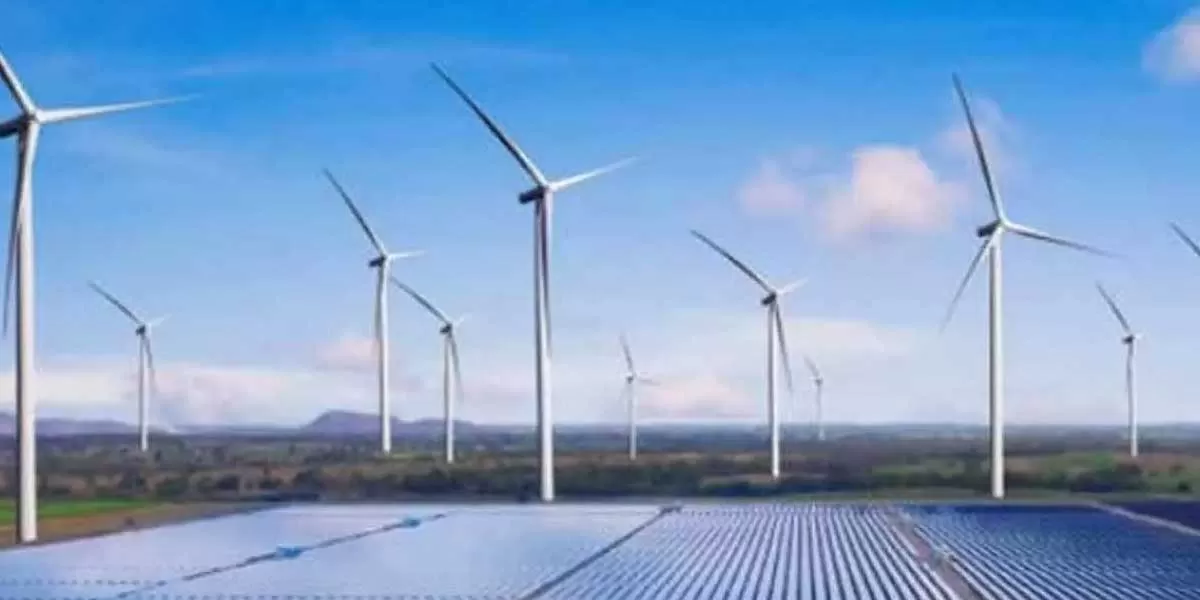
Adani Green Adds 212.5 MW Solar in Gujarat
Adani Green Energy Ltd. has commissioned a 212.5 MW solar power project at Khavda, Gujarat, through its subsidiary Adani Renewable Energy Fifty Seven Ltd. This addition brings Adani Green's total operational renewable capacity to 13,700 MW, as per a stock exchange filing. Last month, Adani Green became India's first renewable energy company to cross 12,000 MW of operational capacity. The company is also developing the world's largest 30,000 MW renewable energy plant in Khavda, spanning 538 sq km—about five times the size of Paris and nearly as large as Mumbai. Upon completion, it will be th..
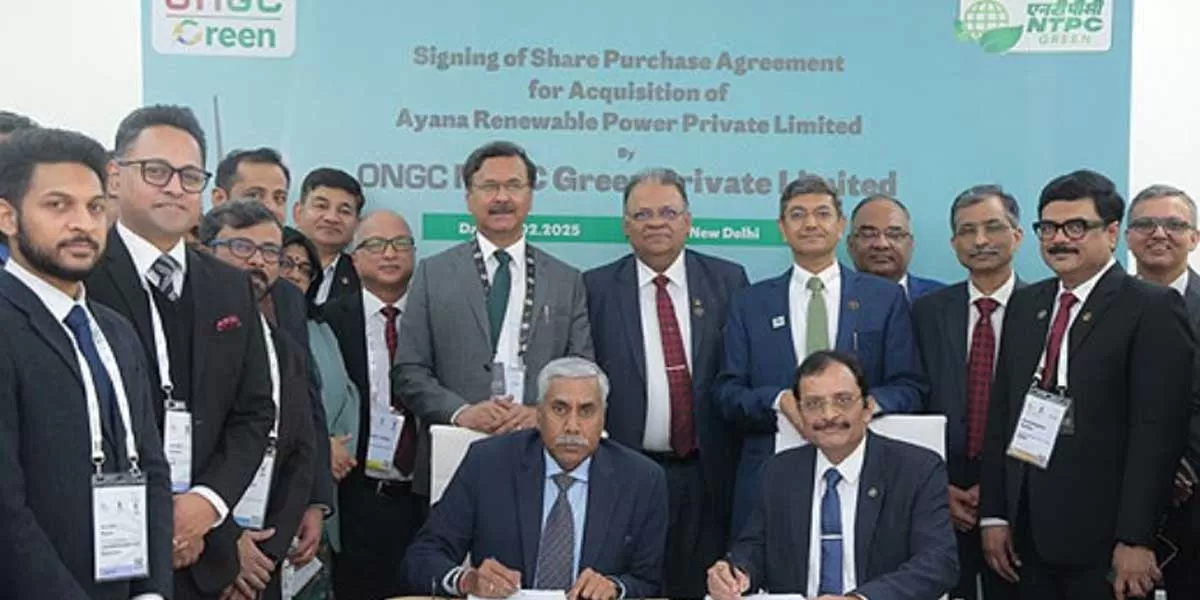
ONGC NTPC Green Acquires Ayana for Rs 62.5 Billion
ONGC NTPC Green Pvt Ltd (ONGPL) has completed the Rs 62.5 billion acquisition of Ayana Renewable Power, securing a 100% equity stake. The 50:50 joint venture between NTPC Green Energy Ltd (NGEL) and ONGC Green Ltd finalized the deal. NGEL contributed Rs 31.2 billion toward the acquisition, aligning with its goal to achieve 60 GW of renewable capacity by 2032. Ayana, a key player in India's green energy sector, has a 4,112 MW portfolio, with 2,123 MW operational and 1,989 MW under construction. Its projects are backed by high-credit-rated buyers, including SECI, NTPC, GUVNL, and Indian Railw..
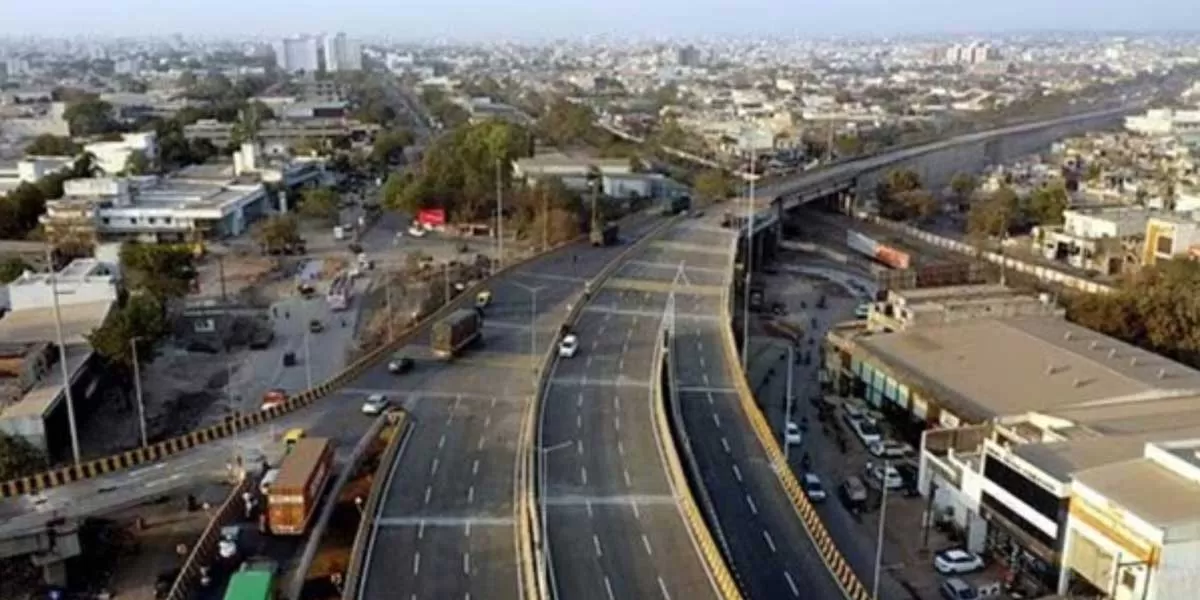
Cabinet Approves Rs 37.1 Billion Patna-Sasaram Corridor
The Union Cabinet has approved the construction of a four-lane access-controlled Patna-Sasaram corridor in Bihar at an estimated cost of Rs 37.1 billion. The 120.1 km project, to be developed under the Hybrid Annuity Mode (HAM), aims to ease congestion and enhance connectivity. Currently, travel between Sasaram, Arrah, and Patna takes 3-4 hours due to heavy traffic on state highways. The new corridor will integrate greenfield and 10.6 km of brownfield upgrades, linking key cities such as Arrah, Grahini, Piro, Bikramganj, Mokar, and Sasaram. The project will connect NH-19, NH-319, NH-922, NH-..
Latest Updates
Recommended for you
Subscribe to Our Newsletter
Get daily newsletters around different themes from Construction world.
Advertisement
Advertisement
subscribe to the newsletter
Don't miss out on valuable insights and opportunities
to connect with like minded professionals







